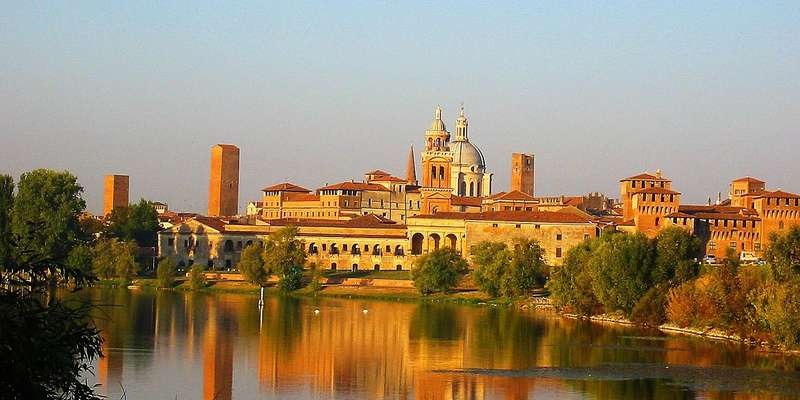- Home
- Useful Tips
- Mantua's connection to Romeo...
Most travelers associate Romeo and Juliet solely with Verona, overlooking Mantua's crucial role in Shakespeare's tragedy. This oversight means missing half the story – literally. Few realize Romeo's exile scenes unfold in Mantua's atmospheric streets, where 16th-century architecture remains eerily unchanged. Over 80% of Verona's 4 million annual visitors never make the 40-minute trip, despite Mantua offering equally authentic Renaissance settings without the crowds. The frustration of piecing together literary history from fragmented online sources leads many to settle for superficial tours. But Mantua holds carefully preserved sites that bring Shakespeare's text to life, if you know where to look. From overlooked courtyards mentioned in Act V to local traditions keeping the legend alive, these connections remain hidden in plain sight.


Why Mantua matters in Romeo and Juliet's tragic story
Shakespeare chose Mantua as Romeo's place of exile deliberately, capitalizing on its reputation as a distant, mysterious city in Renaissance times. The playwright never visited Italy, but Mantua's real-life Gonzaga court perfectly suited the drama. Today, you can stand where Romeo supposedly received Friar Laurence's fateful letter about Juliet's fake death. Local historians have identified several plausible locations for this scene near Piazza Sordello, where messengers from Verona would have entered the city. The Basilica di Sant'Andrea's crypt is particularly evocative, with its shadowy arches matching Shakespeare's description of Romeo's 'den'. Unlike Verona's reconstructed sites, Mantua's settings remain authentically medieval – the uneven cobblestones and weathered brick walls are the same textures Romeo would have known during his banishment.
Finding Juliet's symbolic tomb in Palazzo Ducale
While Verona boasts Juliet's crowded 'tomb', Mantua holds a more historically plausible connection in the Palazzo Ducale's secret passages. Local legend identifies a particular underground chamber as inspiration for Shakespeare's 'vault where the ancient Capulets lie'. The Gonzaga family maintained close ties with Verona's nobility, and their palace archives contain 14th-century references to star-crossed lovers matching the Montague-Capulet feud. Visiting these frescoed corridors requires timing – ask staff about the 'percorso segreto' tour to access areas normally closed to the public. The dim lighting and sudden temperature drops in these underground spaces create an uncanny atmosphere, especially when you notice the heart-shaped carvings some claim were made by lovelorn servants. For DIY explorers, the nearby Chiesa di Santa Maria della Grazie offers a free alternative with its 'tomba di Giulietta' marker in the cloister.
Following Romeo's footsteps through Mantua's medieval quarter
The maze-like streets between Piazza Broletto and Via Giustiziati contain multiple sites tied to Romeo's exile. Pharmacies here still display the herbalist symbols that would have guided Romeo to purchase his poison, particularly at Farmacia Santa Lucia near Via Orefici. Look for the marble bench outside Casa del Mercante where oral tradition claims the exiled Montague spent nights sleeping rough. The adjacent Piazza Erbe becomes remarkably quiet after sunset, letting you imagine Romeo pacing beneath its clock tower awaiting news from Verona. For context, visit the Museo Civico's 'Shakespeare and Mantua' exhibit before exploring – their 16th-century city maps show how little these routes have changed. Early morning walks (before 8am) offer the most atmospheric experience, when fog often lingers in the narrow vicoli just as Shakespeare described Romeo's 'cloudy sigh'.
Local traditions keeping the legend alive beyond tourist sites
Mantua's connection to Romeo and Juliet thrives in unexpected places. The annual Festa di San Giorgio includes a medieval market where vendors reenact scenes from the play, particularly the apothecary scene. Locals know to visit Teatro Bibiena's backstage area, where handwritten 18th-century prompts reveal how actors playing Romeo traditionally entered from a specific trapdoor. For a truly unique experience, time your visit with the September grape harvest – vineyard workers near Sant'Agnese still sing Elizabethan-era ballads about the lovers during the vendemmia. These living traditions make Mantua's Shakespearean heritage feel present rather than preserved. Bookstores like Libera on Via Accademia sell annotated scripts showing Mantua-specific references most English translations miss, perfect for literary pilgrims wanting to deepen their understanding beyond the standard tourist trail.



